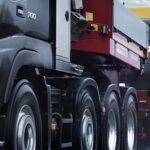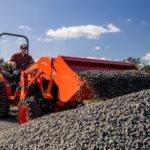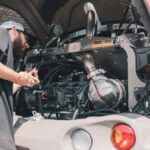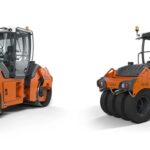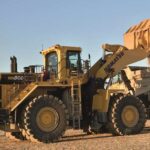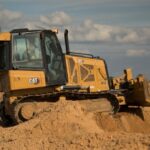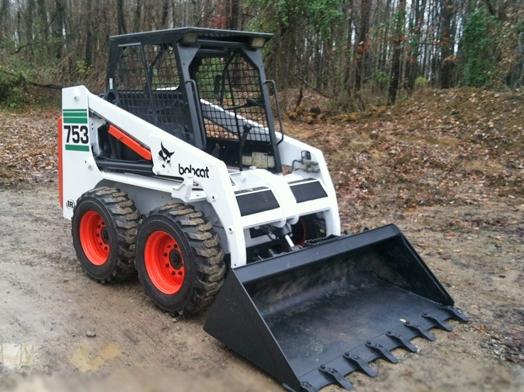
With the development of agriculture and especially the farming segment, interest in compact loaders is growing noticeably. Compact, maneuverable, nimble, they are specially designed to work in confined spaces.
What to look for when buying a mini loader? What are the main trends in the development of this segment of equipment, and what new products will the leading manufacturers of mini loaders for agriculture please the farmers?
Ready for any job
The popularity of compact agricultural machinery is primarily due to the mechanization of manual labor. With the development of the farming segment the attention to such machines is only increasing.
Maneuverability and size allow the use of mini machines even in Soviet-style buildings, with low ceilings. Also, all the advantages are on the side of compact machines and in conventional barns, where there is a technological need to turn in a narrow aisle, almost on the spot.
For comparison, a Weidemann 1280 frontal mini loader exceeds MTZ-82 tractor in lifting capacity, but at the same time it has an engine with twice less power. And the fuel consumption for operations like straw storage (in warehouses), shoveling manure, etc. – three times less.
A wide range of attachments makes this class the most versatile machines
For example, in a barn, they can move, load and distribute feed, push and scrape manure, distribute hay or straw. In poultry houses, they can fill feed and move cages.
“In addition to cleaning, storage and loading work indoors, mini loaders are used outside for various landscaping tasks: trimming branches, mowing poles and curbs, spreading reagent, operated with a hitch, digging buckets, – In addition, with these machines you can sweep the farm, drill holes to install fences and supports, shred stumps, replanting trees, and in the winter season mini loader can help with snow removal. In other words, essentially do all the basic chores both outside and inside the farms.”
Manufacturers do not have a clear definition of what machines can be classified as mini loaders, but in general these are loaders with engine power up to 60 hp, with a length not exceeding 2 meters and a width of up to 1.8 meters.
Mini vehicles with onboard turntable
Traditionally, the class of mini loaders includes all-frame machines with sideways rotation. BobCat, MANITOU, MUSTANG, New Holland, Case, JCB and other companies have such equipment. This segment also includes Weidemann’s Hoftrac, which has become almost synonymous with such design.
The main feature of such vehicles is the ability to turn practically in one place, the so-called “tank turn” over the side. And such maneuverability is provided by the principle of rotary sliding, when the axes of the machine rotate in different directions, and each side of the chassis can be controlled independently from each other. That is, most often their turning radius is almost equal to the length of the chassis.
Such loaders are mainly represented in the “construction” range of special equipment of many brands. They are also adapted for agriculture.
However, given the popularity of such machines, many manufacturers began to produce a special line designed for agricultural producers.
For example, the lifting device on them is a little longer, a wider choice of wheels and profiles for different surfaces, more lighting, as machines often work at night or in dark rooms.
In general, the undeniable advantages of this type of mini loaders can be called simplicity and reliability, large hydraulic power with the ability to connect a huge number of attachments and, of course, the famous “tank turnaround” practically in one place.
The mini skid steer loaders and even mini telescopic loaders have gradually been added to this class as well. For example, front loaders Weidemann 2080 or 2080LP (with low overall height).
These loaders can be classified as mini-telescopic loaders due to their small (up to 1.5 m wide) dimensions and small turning radius.
Also compact telescopic handlers successfully join the ranks of mini-technics. As a rule, it is a model with a lifting capacity of up to 1.6 tons and a boom height up to 6 m. For example, one of the most compact loaders Weidemann T4512 (boom height 4,5 m and carrying capacity 1.2 tons) has only 156 cm in width and less than 2 m in height, has very small internal (821 mm without equipment) and external (no more than 2.6 m, maximum – 3.4 m) radii. This allows it to pass through openings with low ceilings of 2.2 m (old Soviet construction) and work without problems in vegetable and grain warehouses, warehouses of poultry farms, stables, etc.
“Moreover, such tiny “telescopes” can work without problems even inside stables – therefore, they legitimately occupy their niche in the “mini” class.
What’s good for the German…
There are several trends in the development of the segment of mini loaders, and sometimes they pursue the direct opposite goals, and sometimes frankly go against the interests of Ukrainian buyers.
Thus, the global trend to improve the environment and, consequently, reduce emissions of exhaust gases into the atmosphere, leads to the emergence of more environmentally friendly engines. Among the mini-equipment new models also have a high degree of purification of exhaust gases. And all major upgrades from European, American and Japanese manufacturers include an improved environmental component.


